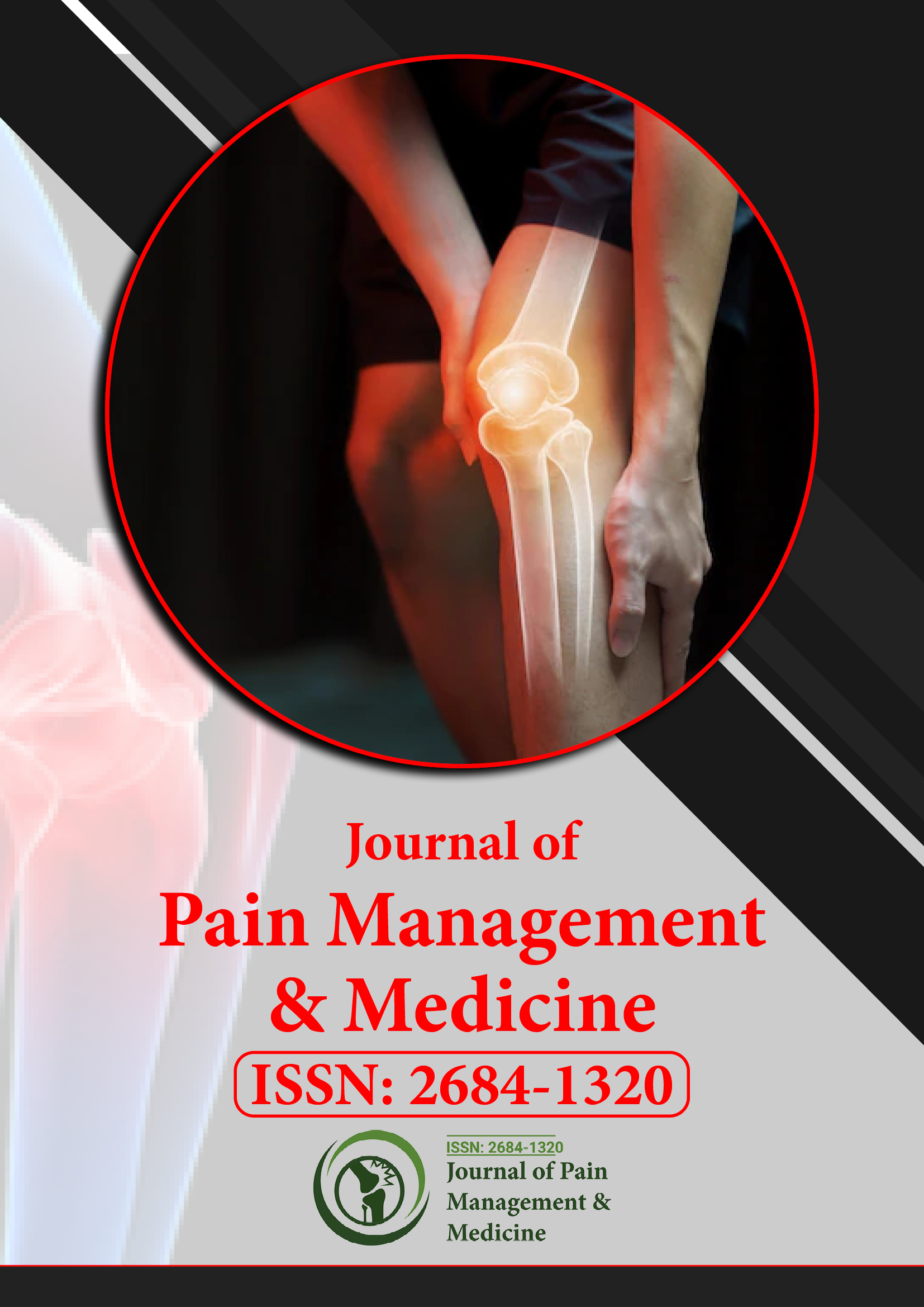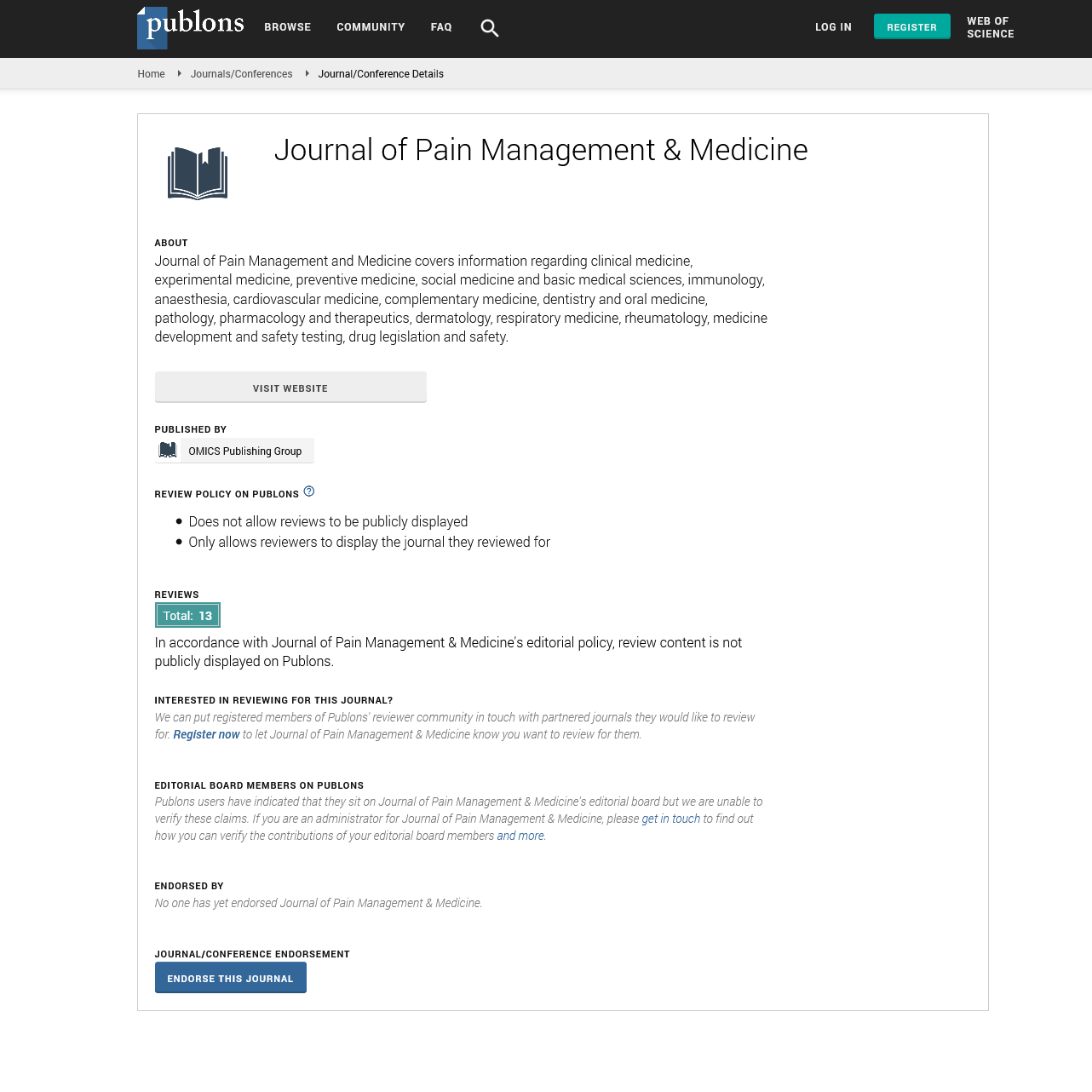Indexed In
- RefSeek
- Hamdard University
- EBSCO A-Z
- Publons
- Euro Pub
- Google Scholar
- Quality Open Access Market
Useful Links
Share This Page
Journal Flyer

Open Access Journals
- Agri and Aquaculture
- Biochemistry
- Bioinformatics & Systems Biology
- Business & Management
- Chemistry
- Clinical Sciences
- Engineering
- Food & Nutrition
- General Science
- Genetics & Molecular Biology
- Immunology & Microbiology
- Medical Sciences
- Neuroscience & Psychology
- Nursing & Health Care
- Pharmaceutical Sciences
Opinion Article - (2022) Volume 8, Issue 6
Assessment of Neuropathic Pain in Patients and its Mechanism
Juping Huang*Received: 03-Nov-2022, Manuscript No. JPMME-22-19358; Editor assigned: 07-Nov-2022, Pre QC No. JPMME-22-19358 (PQ); Reviewed: 21-Nov-2022, QC No. JPMME-22-19358; Revised: 28-Nov-2022, Manuscript No. JPMME-22-18548 (R); Published: 08-Dec-2022, DOI: 10.35248/2684-1320.22.8.188
Description
Neuropathic pain is pain caused by injury or disease of the somatosensory system. Neuropathic pain can be associated with abnormal sensations called paresthesias, or pain from normally non-painful stimuli (allodynia). It can have continuous and/or episodic (paroxysmal) components. The latter is similar to knife wounds and electric shocks. Common features include a burning or cold sensation, tingling, numbness, and itching. It affects up to 7%-8% of the European population, and 5% may develop severe disease. Neuropathic pain can result from disorders of the peripheral nervous system or the central nervous system "brain and spinal cord." Neuropathic pain can therefore be divided into peripheral neuropathic pain, central neuropathic pain, or a combination of both types of (peripheral and central) neuropathic pain. Neuropathic pain can occur alone or in combination with other forms of pain.
Treatment focuses on identifying the underlying cause and relieving pain. In neuropathy, pain may progress to numbness. In the specific instance of neuropathic pain, many symptoms can be present. These symptoms include: Spontaneous pain (pain that occurs without stimulation) shooting, burning, stabbing, or electric shock pain, tingling, numbness, or tingling sensation. Evoked pain caused by normally non-painful stimuli, such as cold, gentle brushing of the skin, or pressure this is called as allodynia. Evoked pain can also mean pain that is made worse by a normally painful stimulus, such as a pin prick or heat. This type of pain is known as a hyperalgesia. Spontaneous or evoked (paresthesia) unpleasant and abnormal sensations. Sleep disturbance and emotional problems due to insomnia and pain. Pain that can be relieved in response to a normally painful stimulus (hypoalgesia).
Anticonvulsants and antidepressants are often the first-line treatment. Several studies on neuropathic pain suggest that the use of Non-Steroidal Anti-Inflammatory Drugs (NSAIDs) such as Aleve and Motrin may reduce pain. Some people may need stronger pain relievers. Be sure to discuss the pros and cons of any medication we are taking with the doctor. If another condition is involved, such as diabetes, better management of that condition can reduce pain. Effective management of the condition can also prevent further nerve damage.
Pain specialists can use invasive or implantable devices to effectively manage pain when treatment is difficult. Electrical stimulation of nerves involved in neuropathic pain can greatly control pain symptoms. Complete treatment of neuropathic pain is difficult, but it is usually not life-threatening. For best results, combine rehabilitation with emotional, social and mental wellbeing support. Using some or most of the above methods, with the help of a pain specialist, can control the pain to levels that improve their quality of life.
Central neuropathic pain is commonly associated with spinal cord injury, multiple sclerosis, peripheral neuropathy, diabetes, metabolic disorders, herpes zoster infection, HIV-associated neuropathy, malnutrition, toxins, distant manifestations of malignancies, immunity. Intervening disorders, and caused by physical trauma to the nerve trunk. Neuropathic pain in cancer is often seen as a direct result of cancer (e.g., tumor compression) of the peripheral nerves or as a side effect of chemotherapy (chemotherapy-induced peripheral neuropathy), radiation injury, or surgery.
Neuropathic pain has profound physiological effects on the brain that can manifest as psychological disorders. A rodent model capable of decoupling the social impact of chronic pain from other factors suggests that the induction of chronic pain can lead to anxiety-depressive symptoms, and that specific brain circuits are directly involved. There may be a two-way relationship between depression and neuropathic pain, and part of the therapeutic effect of antidepressants in neuropathic pain may be in alleviating comorbid depression. Neuropathic pain has important social welfare implications that should not be ignored. People with neuropathic pain have difficulty at work, high levels of presentism, absenteeism, and unemployment, high levels of substance abuse (which may be related to attempts at self-medication), and social interactions can be difficult.
Citation: Huang J (2022) Assessment of Neuropathic Pain in Patients and its Mechanism. J Pain Manage Med.8:188.
Copyright: © 2022 Huang J. This is an open access article distributed under the terms of the Creative Commons Attribution License, which permits unrestricted use, distribution, and reproduction in any medium, provided the original author and source are credited.

